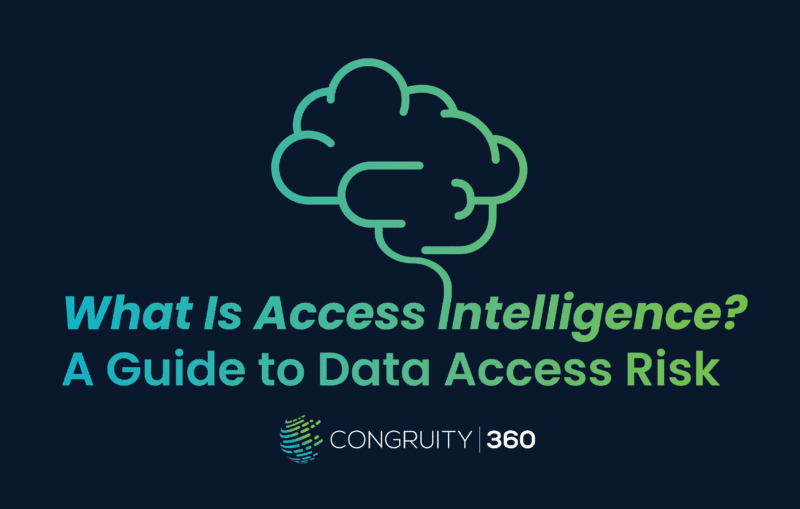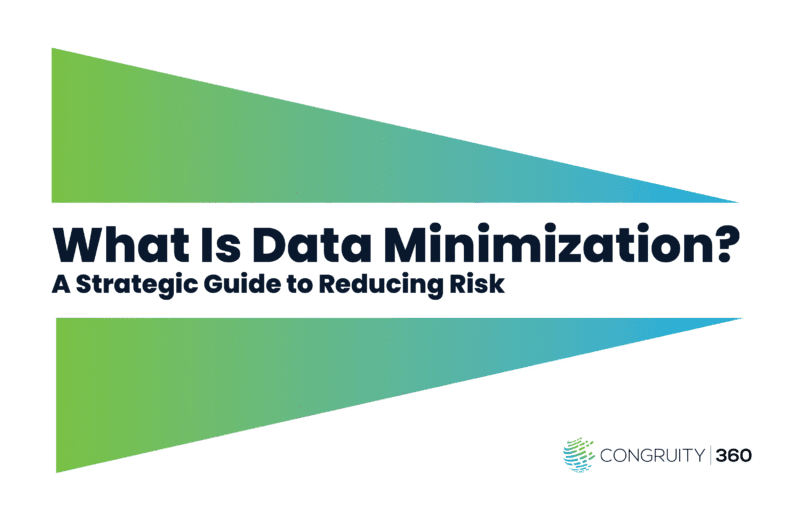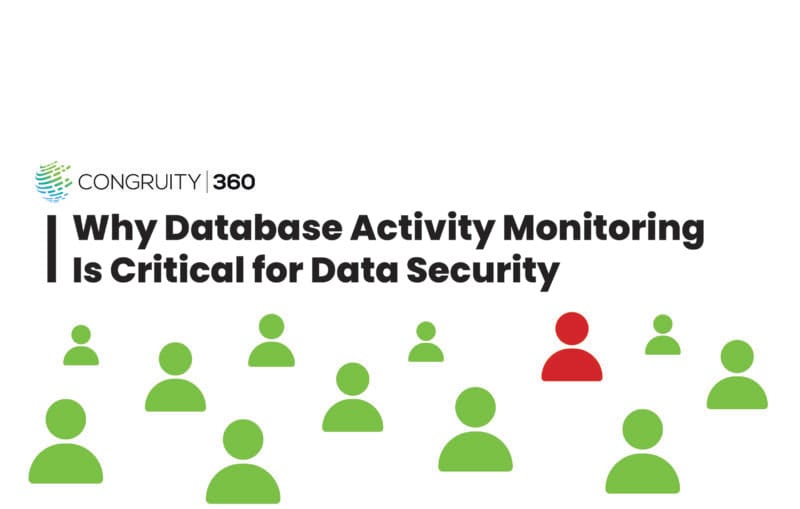Data Security Posture Management (DSPM) has rapidly become an essential component of modern cybersecurity. As organizations accelerate their move to complex, multicloud environments, the amount of data they create and store is growing exponentially. In fact, unstructured data is growing by 55-65% annually. DSPM provides the visibility and control needed to secure this data, wherever it resides.
At its core, DSPM is a set of automated tools and processes that continuously discovers, classifies, and monitors sensitive data to identify security risks and compliance violations. It helps answer critical questions: Where is our sensitive data? Who has access to it? How is it being used? Is it secure?
However, it’s just as important to understand what DSPM is not. It’s often confused with other security solutions:
- Cloud Security Posture Management (CSPM): CSPM tools focus on securing the cloud infrastructure itself—think virtual machines, networks, and storage accounts. They identify misconfigurations and policy violations at the infrastructure level. DSPM, on the other hand, is data-centric. It looks inside the data stores that CSPM protects to understand the data’s sensitivity and risk.
- Data Loss Prevention (DLP): Traditional DLP solutions are perimeter-based, focusing on data in motion to prevent it from leaving the network. DSPM focuses on data at rest, providing deep visibility into where sensitive information is stored and helping to prevent data breaches before they happen by identifying vulnerabilities like excessive permissions or insecure configurations.
Two of the most significant challenges that modern enterprises face are shadow data (sensitive data in unknown or unmanaged locations) and coverage gaps across multicloud and on-premises environments. A robust DSPM strategy is designed to illuminate these blind spots, providing a unified view of your entire data landscape.
Buying Criteria for DSPM Tools
Selecting the right DSPM tool requires careful consideration of your organization’s specific needs. As you evaluate vendors, focus on these key criteria to ensure you choose a solution that delivers comprehensive data security.
Coverage
Your data doesn’t live in a single location, so your DSPM solution shouldn’t either. The most effective tools offer broad coverage across various environments:
- Multicloud: The tool must seamlessly integrate with major cloud service providers (CSPs) like AWS, Azure, and Google Cloud. This includes support for a wide range of services, from IaaS (Infrastructure-as-a-Service) and PaaS (Platform-as-a-Service) to DBaaS (Database-as-a-Service).
- On-Premises: Many organizations still maintain significant on-premise data stores. Your DSPM solution should be able to connect to and scan on-premise file shares, databases, and other legacy systems to eliminate critical coverage gaps.
Discovery Methods
How a DSPM tool finds your data is fundamental to its effectiveness. Vendors typically use one or a combination of these methods:
- Agentless: This is the most common approach. The tool connects to your cloud accounts and data stores via APIs, without needing to install any software on your systems. This method offers rapid deployment and broad visibility.
- Metadata Analysis: Some tools analyze metadata to quickly identify potentially sensitive files without scanning the content itself. While faster, this can be less accurate than deep content inspection.
- Sampling: To manage performance and cost, some solutions scan a representative sample of data. This can provide a good overview of risk but may miss isolated instances of sensitive data.
Key Features
Beyond discovery and coverage, look for these essential features:
- Built-in Classifiers: The tool should come with a rich library of pre-built classifiers for common data types like PII (Personally Identifiable Information), PHI (Protected Health Information), and financial data. It should also allow for the creation of custom classifiers tailored to your business.
- Remediation Workflows: Identifying risk is only half the battle. A strong DSPM solution provides automated or guided remediation workflows. This could include revoking excessive permissions, enabling encryption, or quarantining sensitive files.
- Pricing: Pricing models vary. Some vendors charge based on the amount of data scanned, while others charge per data store or user. Understand the model and ensure it aligns with your budget and expected data growth.
The DSPM Vendor Landscape in 2025
The DSPM market is dynamic, with a diverse set of vendors offering unique strengths. As a recognized leader in unstructured data management, Congruity360 provides a comprehensive solution that excels in classification and governance, making it a benchmark in the industry.
Here’s a breakdown of the primary categories of DSPM players:
- Data-First DSPM Tools: These vendors are pure-play DSPM specialists. They offer deep data discovery and classification capabilities, providing granular visibility into sensitive data across multicloud environments. Their focus is solely on the data itself, making them experts in identifying data-related risks.
- CNAPP + DSPM Solutions: Cloud-Native Application Protection Platforms (CNAPPs) are converging with DSPM. These vendors offer a holistic cloud security solution that combines CSPM, CWPP (Cloud Workload Protection Platform), and DSPM. This integrated approach allows security teams to correlate infrastructure risks with data sensitivity from a single platform.
- Access-Centric Players: These tools focus on data access governance. They map out who has access to what data, identify excessive permissions, and help enforce the principle of least privilege. While they may have lighter classification capabilities, their strength lies in managing the “who” and “how” of data access.
- Hybrid/On-Prem Players: Some vendors specialize in bridging the gap between on-premises and cloud environments. They offer robust solutions for organizations that have a significant footprint in both worlds, ensuring consistent data security policies across a hybrid infrastructure.
- Enterprise Suites: Large enterprise software companies are integrating DSPM capabilities into their broader security and data management platforms. These suites offer the benefit of a single vendor for multiple needs, though their DSPM features may be less specialized than those of pure-play vendors.
Where DSPM Meets Unstructured Data Governance
DSPM tools are powerful, but they often face challenges when dealing with the sheer volume and complexity of unstructured data. With unstructured data accounting for up to 90% of all enterprise data, this is a significant hurdle. This is where specialized unstructured data governance solutions like Congruity360 become critical partners.
DSPM can tell you that a particular file contains sensitive information, but it may not provide the deep context needed for effective governance. Congruity360 enhances DSPM capabilities by adding:
- Advanced Classification: Our platform can analyze the content and context of unstructured data with a high degree of accuracy, identifying not just PII but also business-critical intellectual property, contractual obligations, and other forms of sensitive information.
- Policy Enforcement: Congruity360 allows you to define and enforce granular data governance policies. This includes data retention, defensible deletion, and access controls based on the data’s classification. By integrating with a DSPM tool, you can automatically apply these policies as new data risks are discovered.
This combination creates a powerful synergy. The DSPM tool finds the sensitive data, and a solution like Congruity360 provides the intelligence and actionability to govern it effectively, closing the loop from discovery to remediation.
A Reference Architecture for DSPM and Data Governance
Integrating a DSPM tool with an unstructured data governance platform creates a robust, closed-loop security process. Here is a simple, three-step reference architecture that leverages the strengths of both solutions.
Step 1: Gain Instant Insights to Identify At-Risk Data
The process begins with discovery. The DSPM tool scans your multicloud and on-premise environments to locate sensitive data. Simultaneously, a solution like Congruity360’s Instant Insights performs a deep analysis of your unstructured data, identifying risks based on content, context, and permissions. This initial step provides a comprehensive inventory of your sensitive data and its current security posture.
Step 2: Align Data Classification with DSPM Policies
Once data is discovered and initially classified, the unstructured data governance platform enriches this classification with business context. You can apply custom tags that align with your organization’s policies (e.g., “Legal Hold,” “Confidential-Finance,” “PII-GDPR”). These enriched classifications are then fed back into the DSPM tool, allowing its policies to be applied with greater precision. For example, a policy can be set to trigger an alert only when “Confidential-Finance” data is found in a publicly accessible S3 bucket.
Step 3: Send Violations to IAM for Review and Remediation
When the DSPM tool detects a policy violation (e.g., excessive permissions on a folder containing tagged sensitive data), it can automatically trigger a remediation workflow. The alert is sent to your Identity and Access Management (IAM) system, creating a ticket for the data owner or security team to review. This workflow ensures that risks are not just identified but are also promptly addressed by the right people, enforcing the principle of least privilege and strengthening your overall security posture.
Top Picks: The Best DSPM Tool for Your Situation
The ideal DSPM solution depends on your organization’s unique environment, priorities, and existing security stack. Here are our top recommendations for different scenarios in 2025.
Best for Multicloud Complexity
For organizations operating across AWS, Azure, and GCP, you need a tool with deep, native integrations for each platform. Look for vendors that offer a single, unified dashboard to manage data security across all your cloud environments. These “data-first” DSPM tools often provide the most comprehensive visibility into the specific nuances of each cloud provider’s data services.
Best for Privacy-Focused Organizations
If your primary driver is compliance with regulations like GDPR, CCPA, or HIPAA, choose a solution with strong, out-of-the-box classifiers for these frameworks. The best tools in this category not only identify relevant data but also map it to specific regulatory requirements and provide audit-ready reports. They should help you manage Data Subject Access Requests (DSARs) and enforce data residency policies.
Best for Hybrid and On-Prem Environments
For enterprises with a significant on-premise data footprint, select a DSPM tool designed for hybrid reality. These solutions offer connectors for on-premise file servers, SharePoint instances, and databases, ensuring you have a consistent view of your data security posture everywhere. Congruity360 excels in this area, offering a powerful platform to classify and govern unstructured data, no matter where it is stored.
Strengthen Your Data Security Posture
The exponential growth of data is not slowing down. By 2025, the world is projected to generate 180 zettabytes of data, much of it unstructured and stored in the cloud. Navigating this landscape without a clear view of your sensitive information is no longer an option. DSPM provides the foundational visibility required to protect your most valuable asset: your data.
By carefully evaluating your needs against the current vendor landscape and focusing on solutions that offer comprehensive coverage and actionable remediation, you can build a resilient data security program. And by pairing your DSPM tool with a robust unstructured data governance platform like Congruity360, you can move from simply identifying risks to proactively managing and securing your data for the future.Ready to gain actionable insight into the DNA of your data? Talk to us today to learn how Congruity360 can enhance your data security posture.





